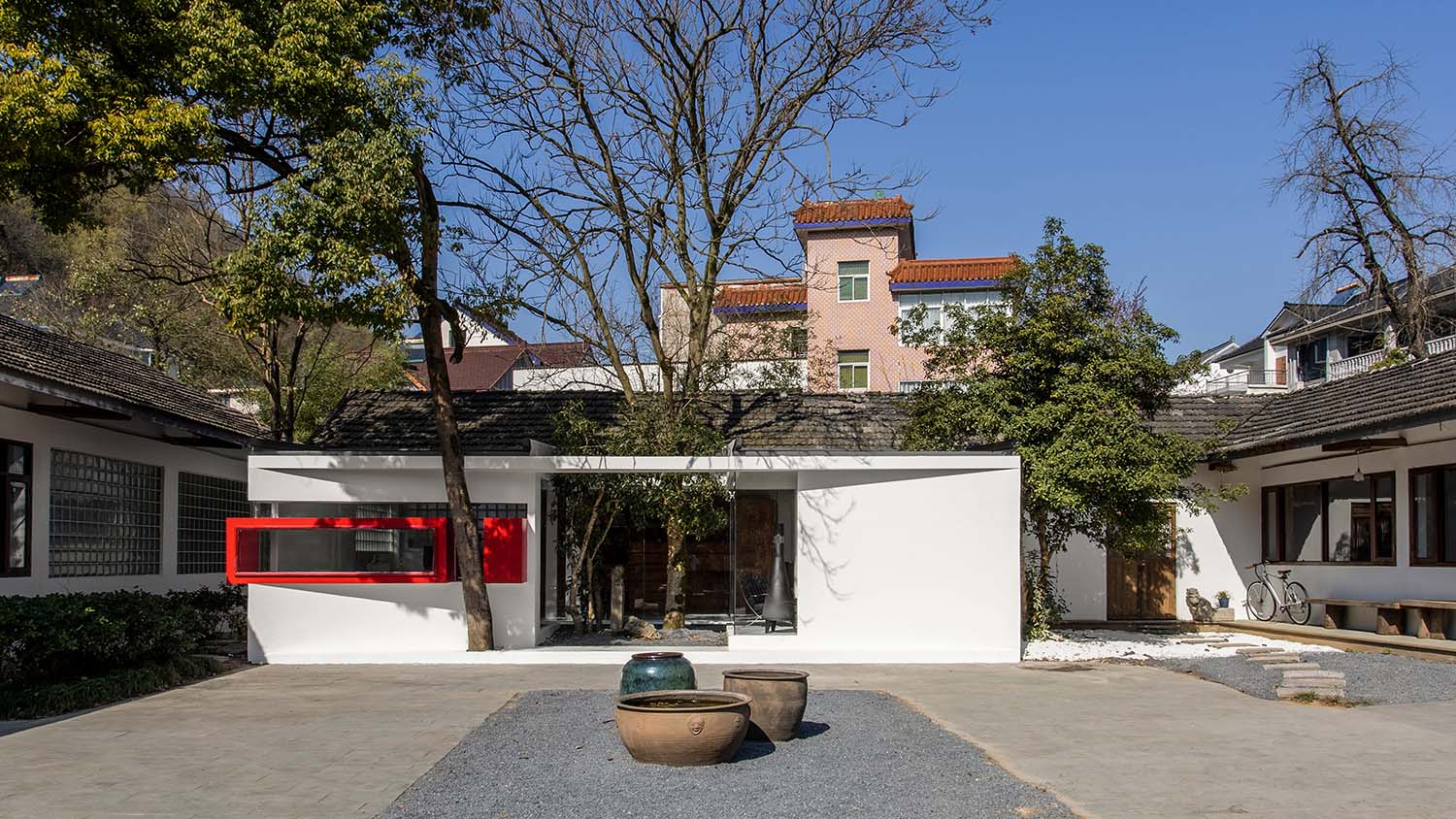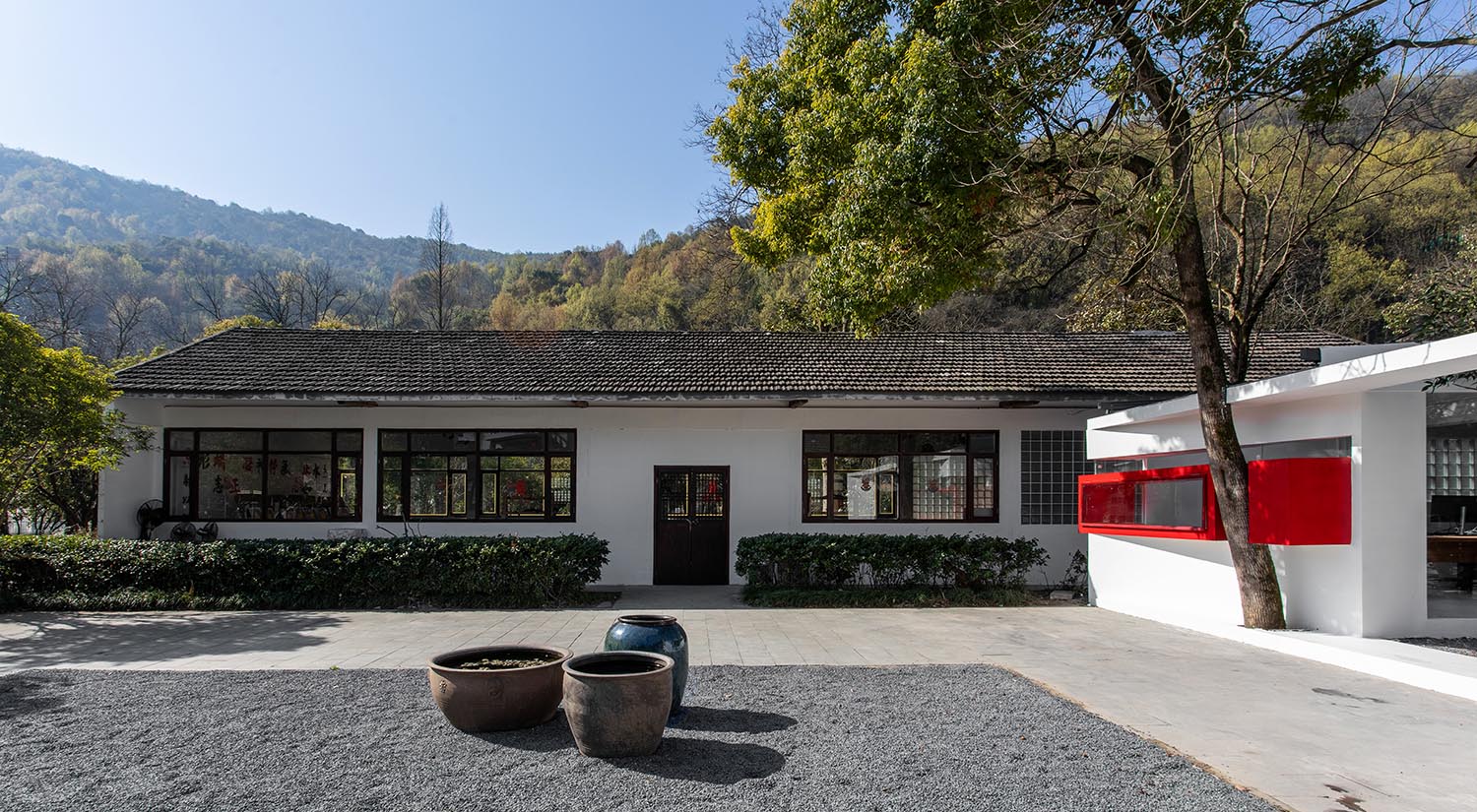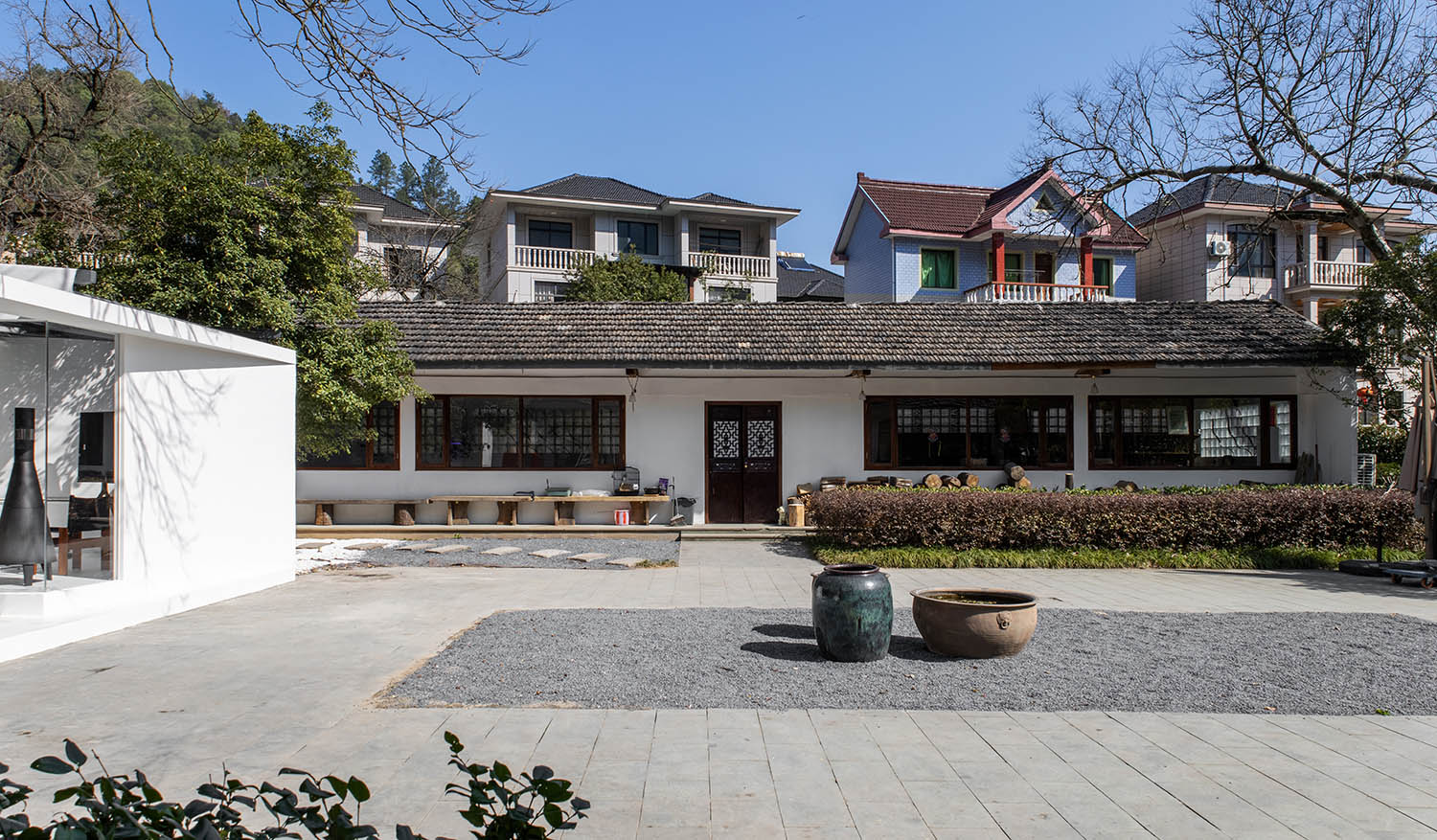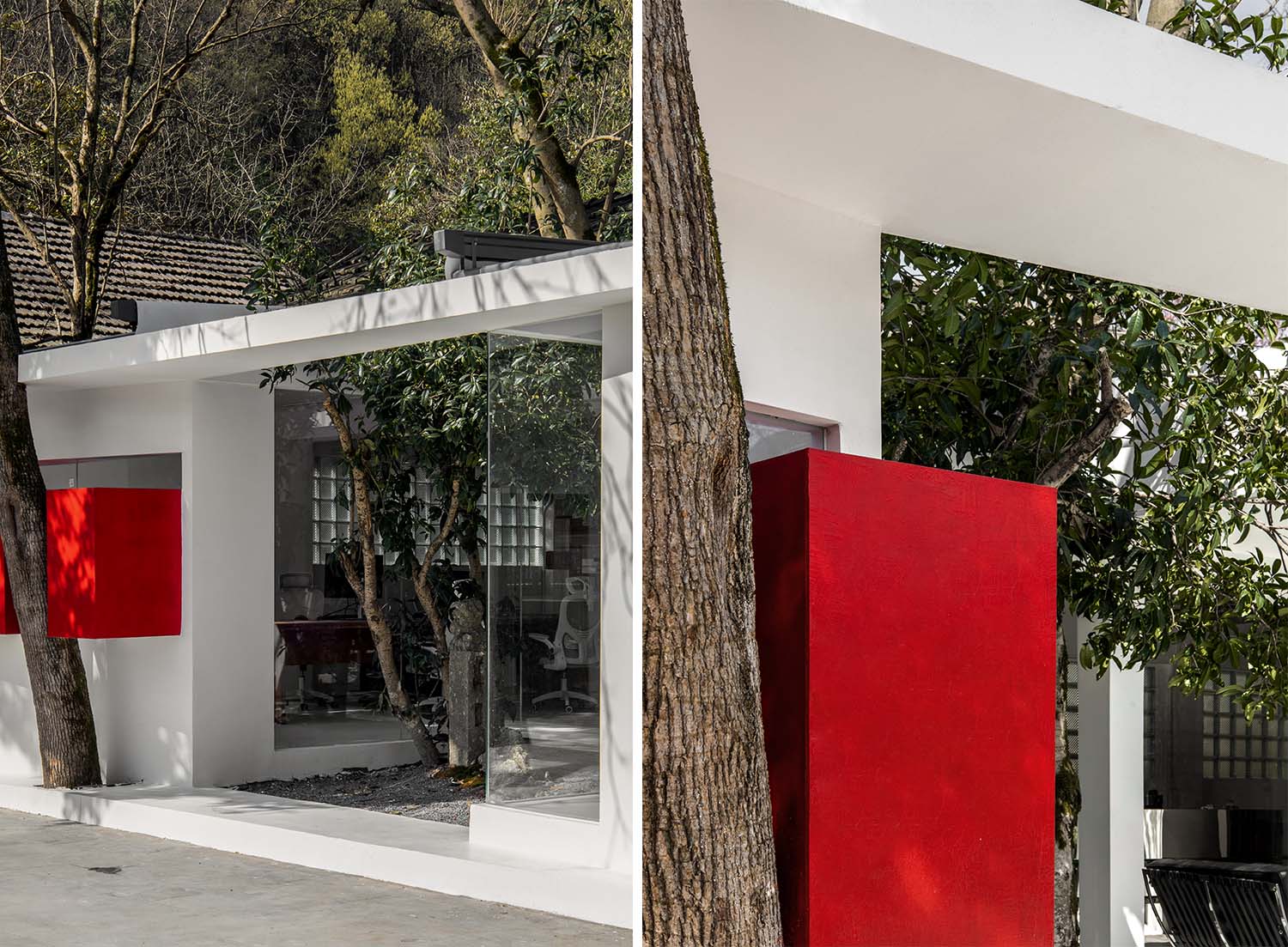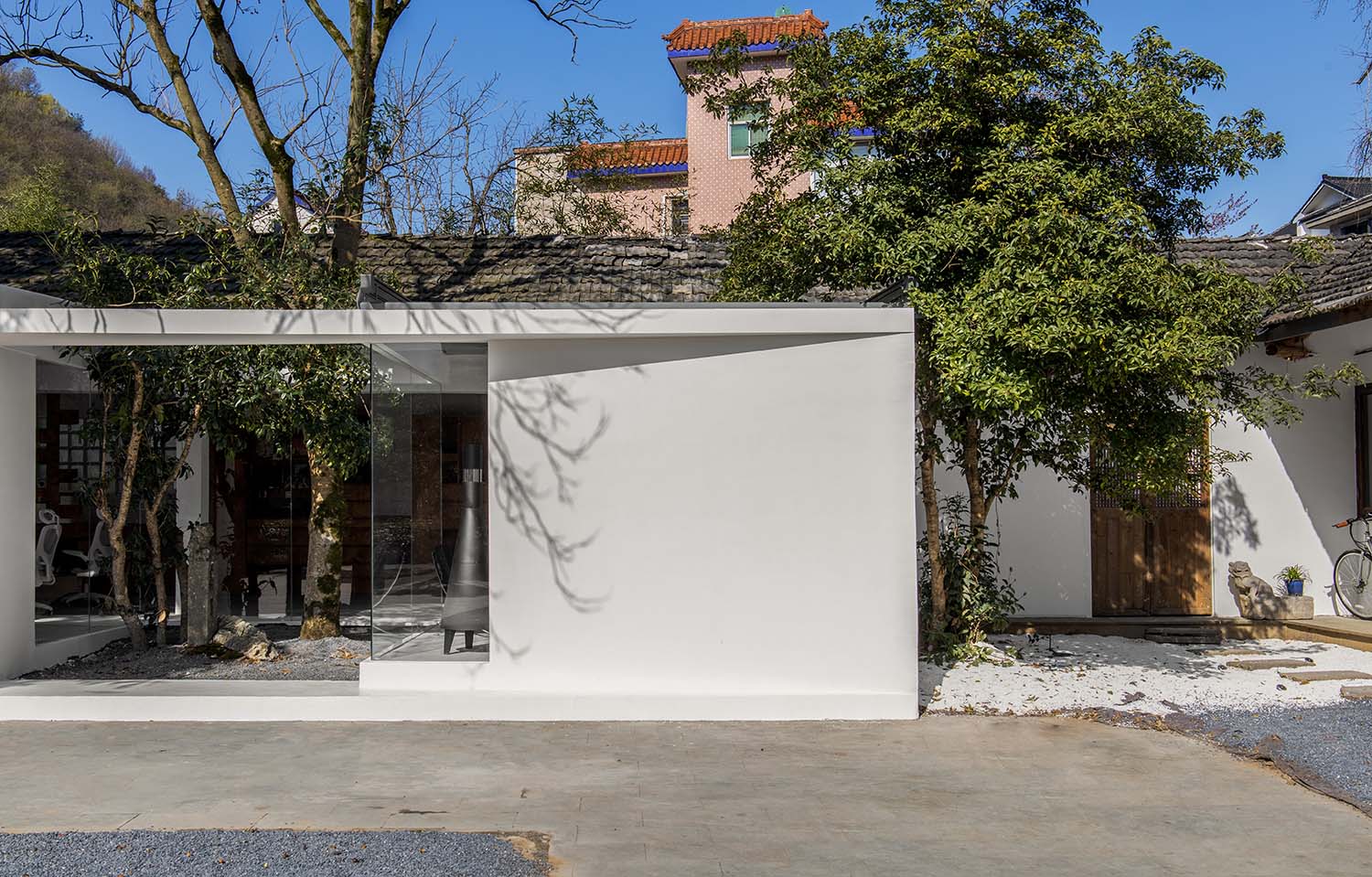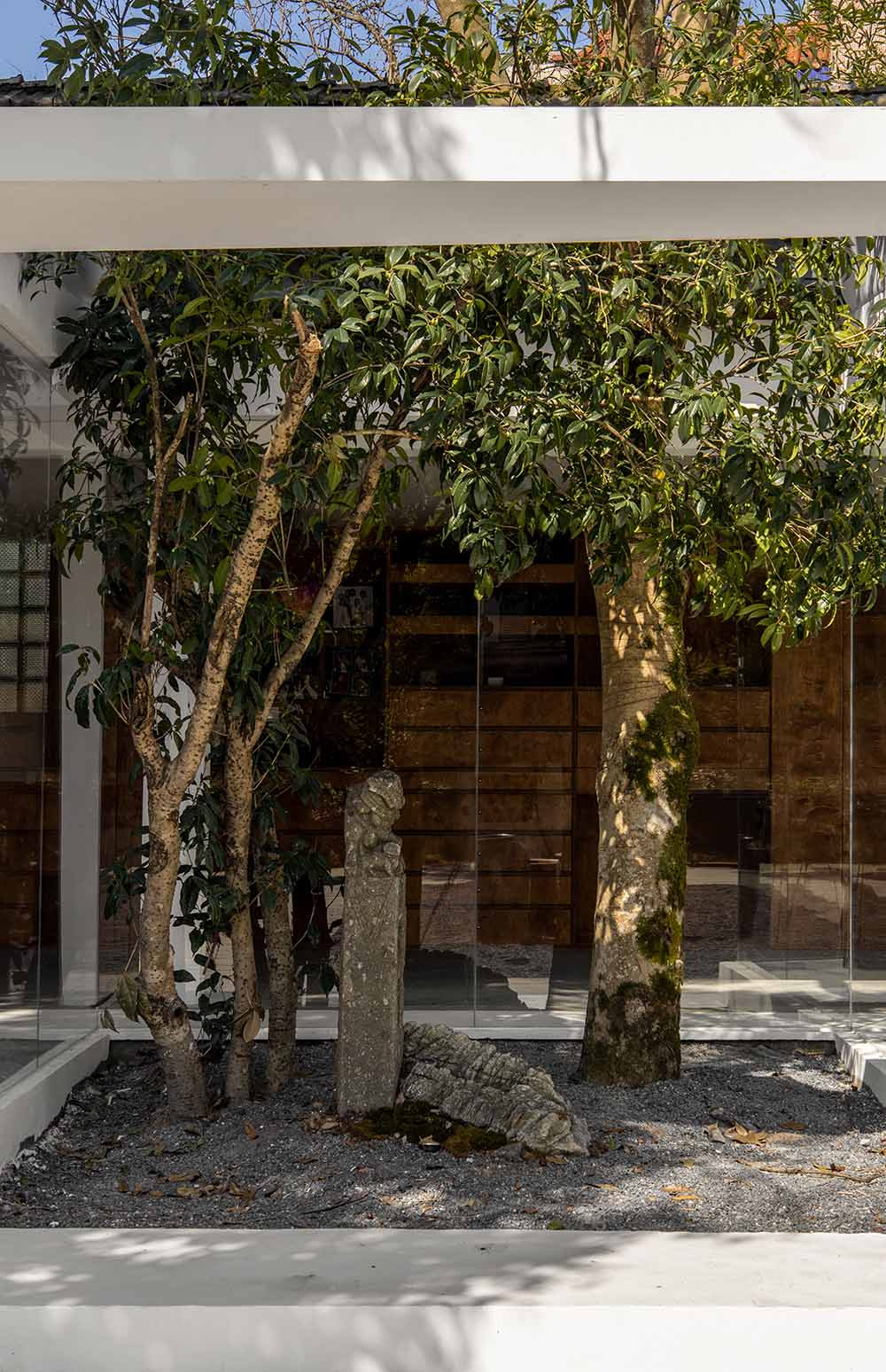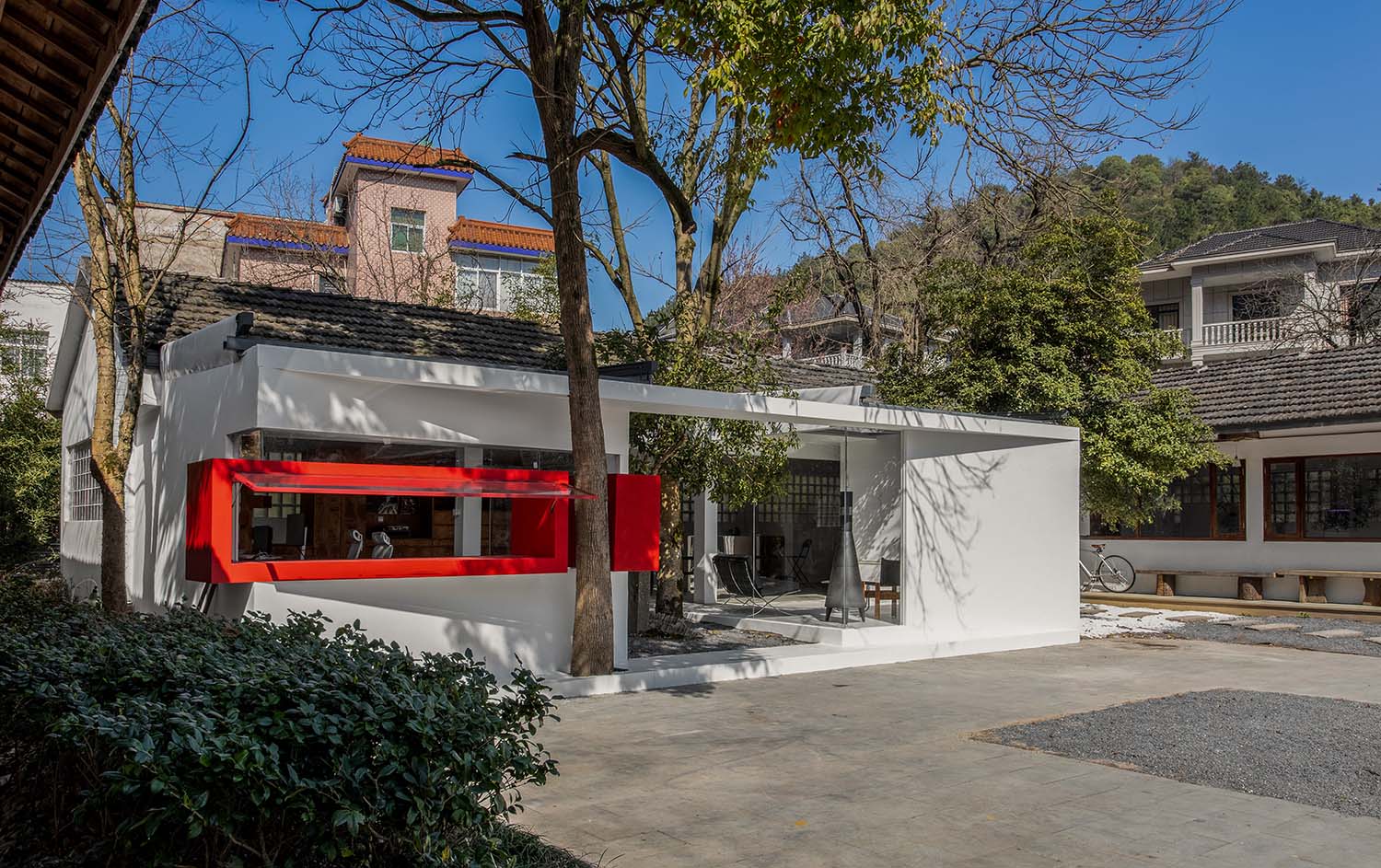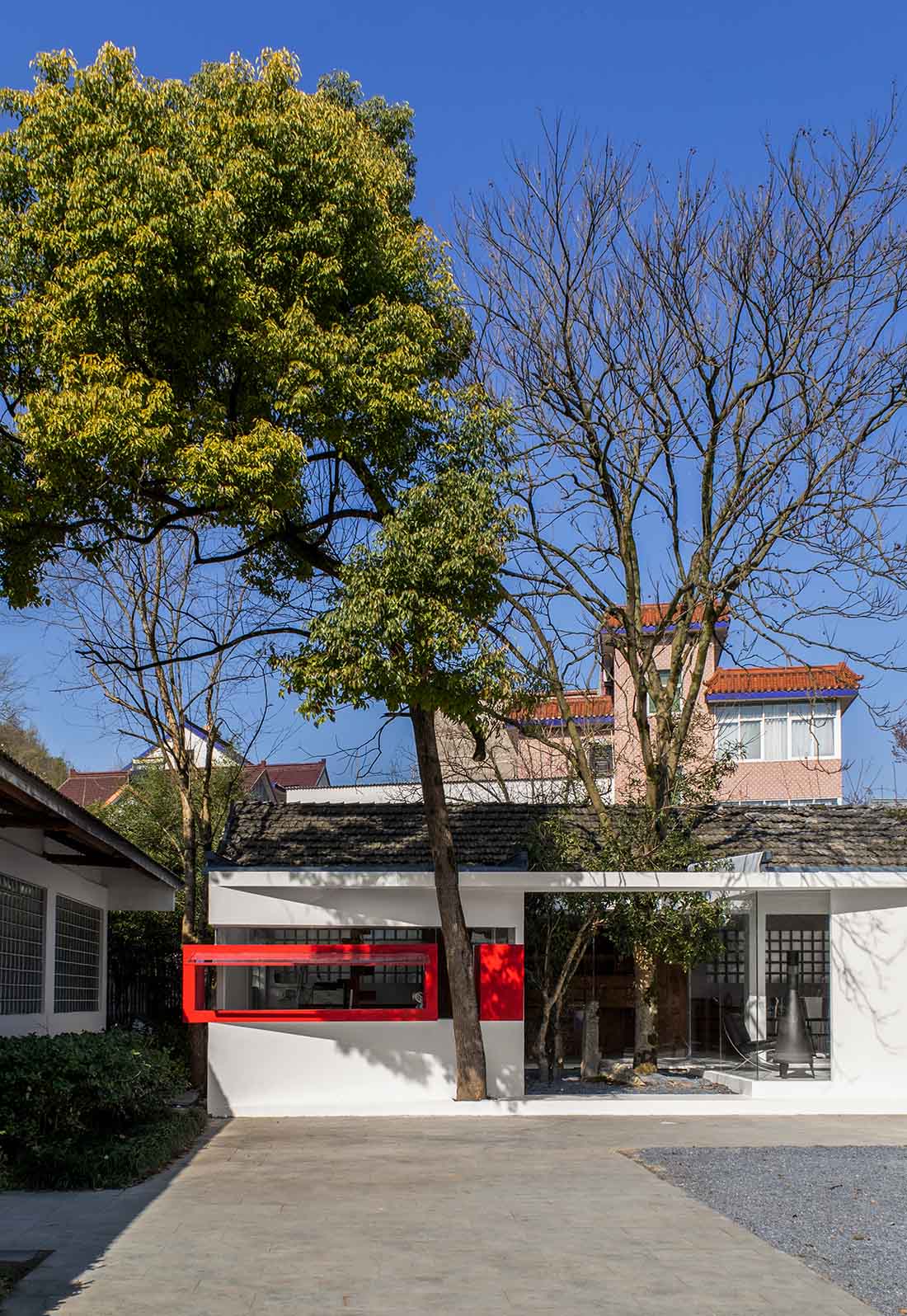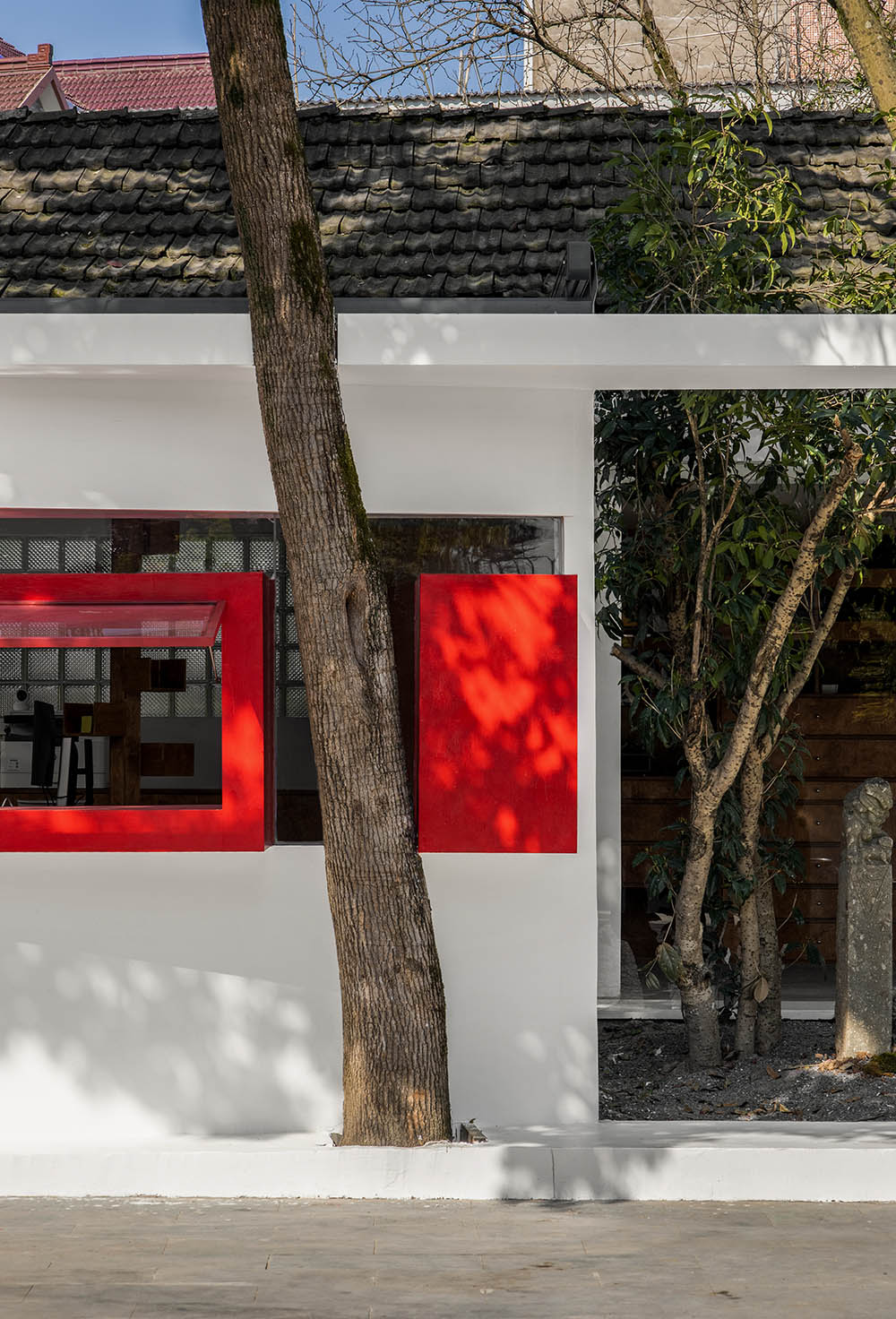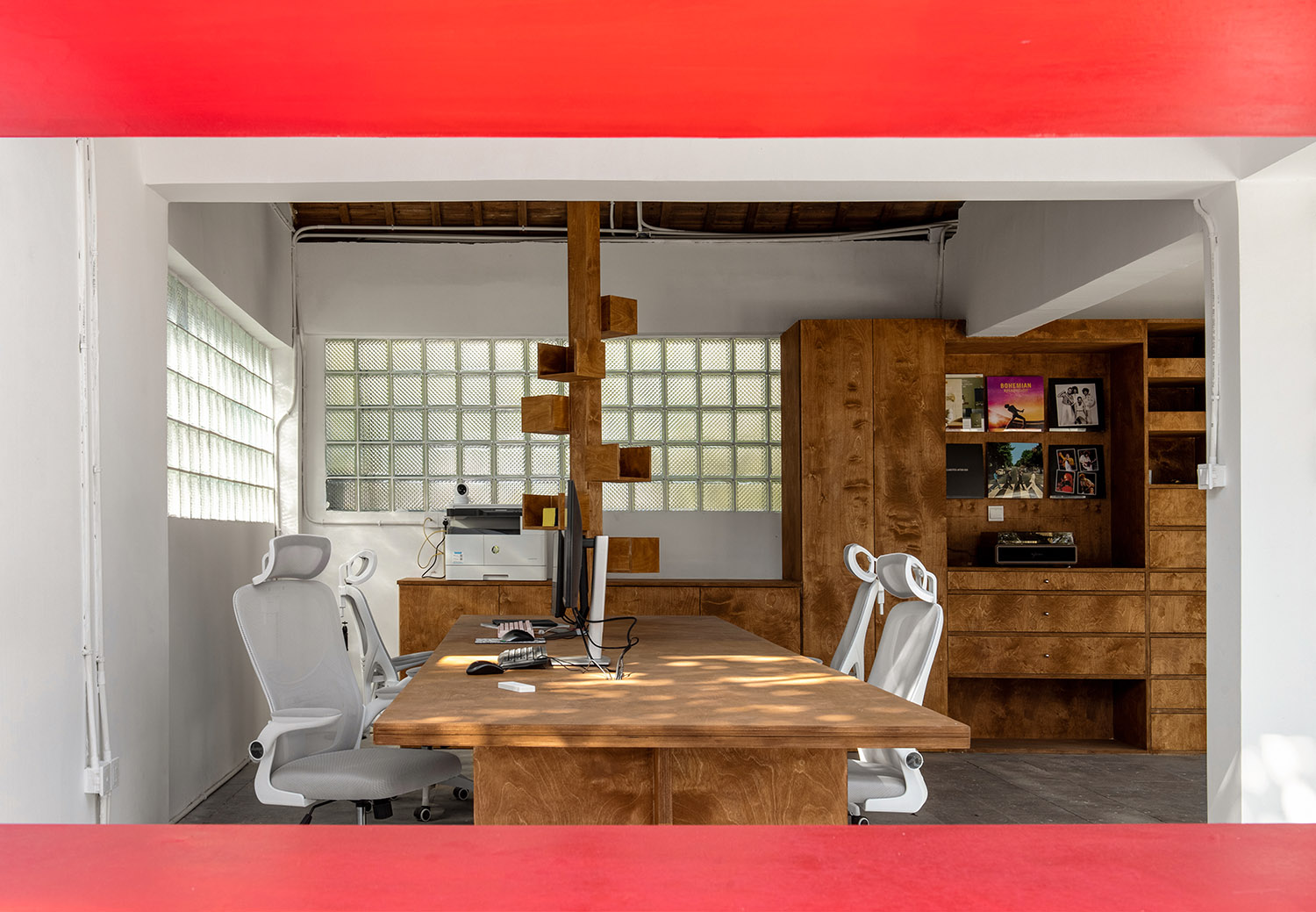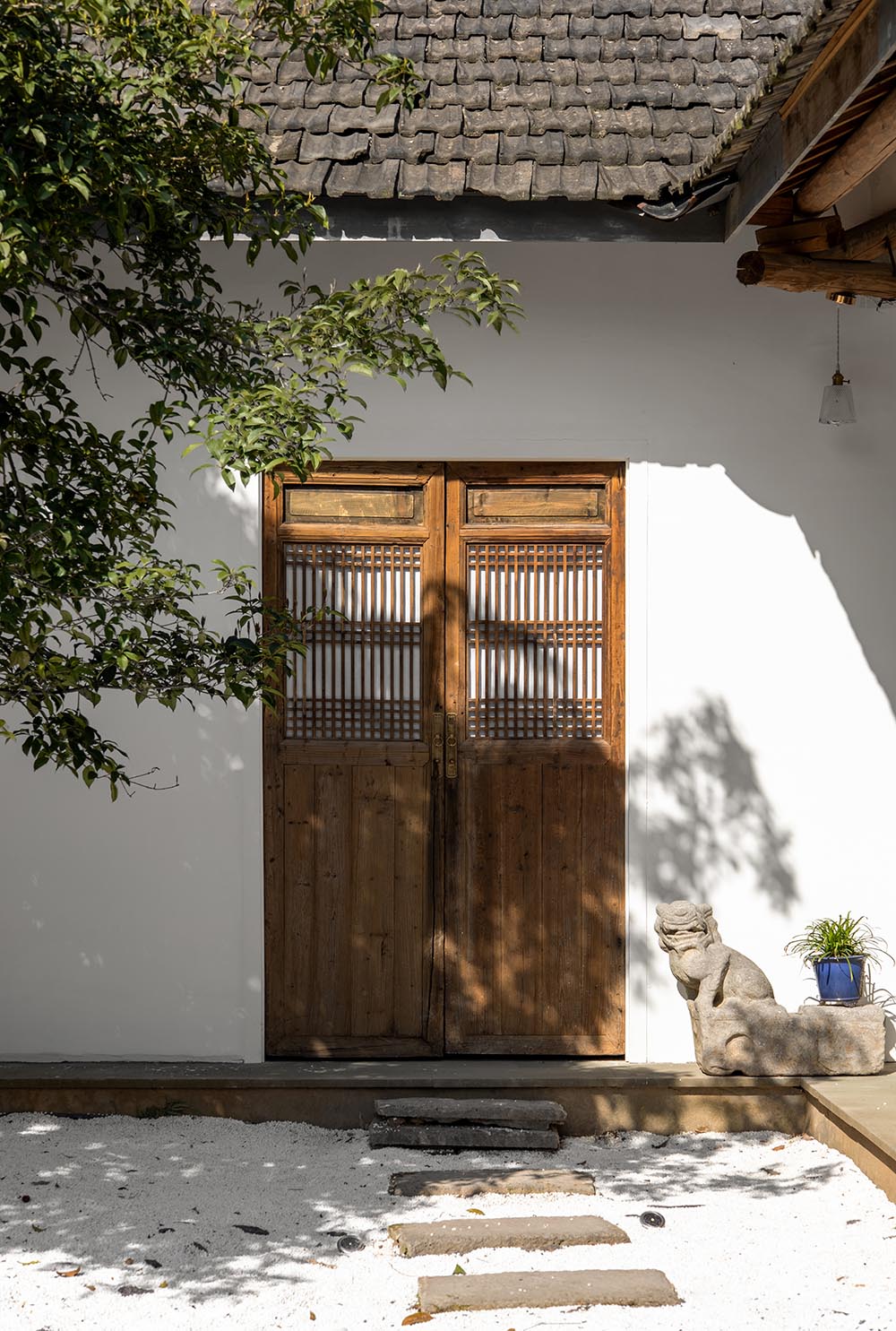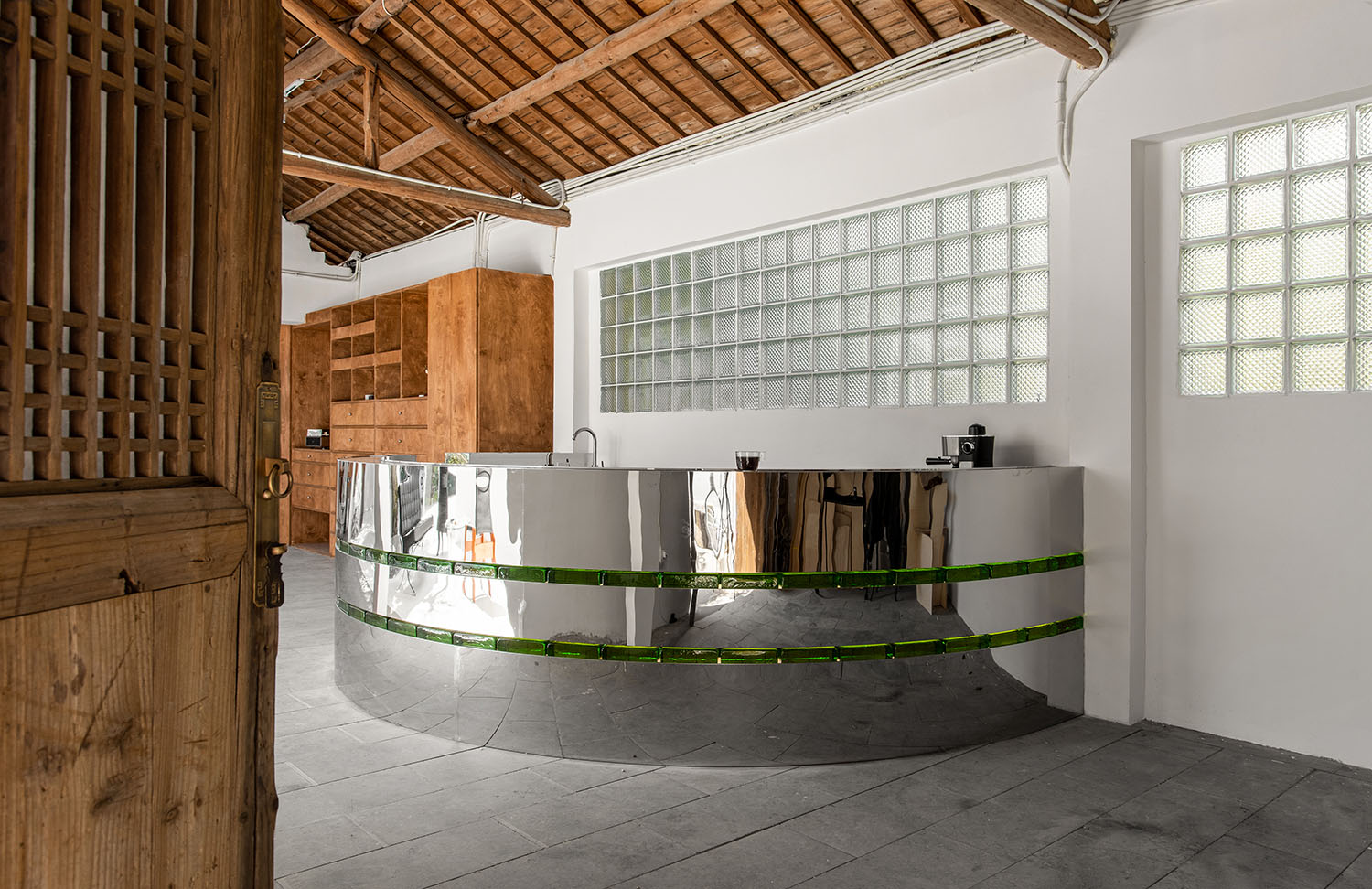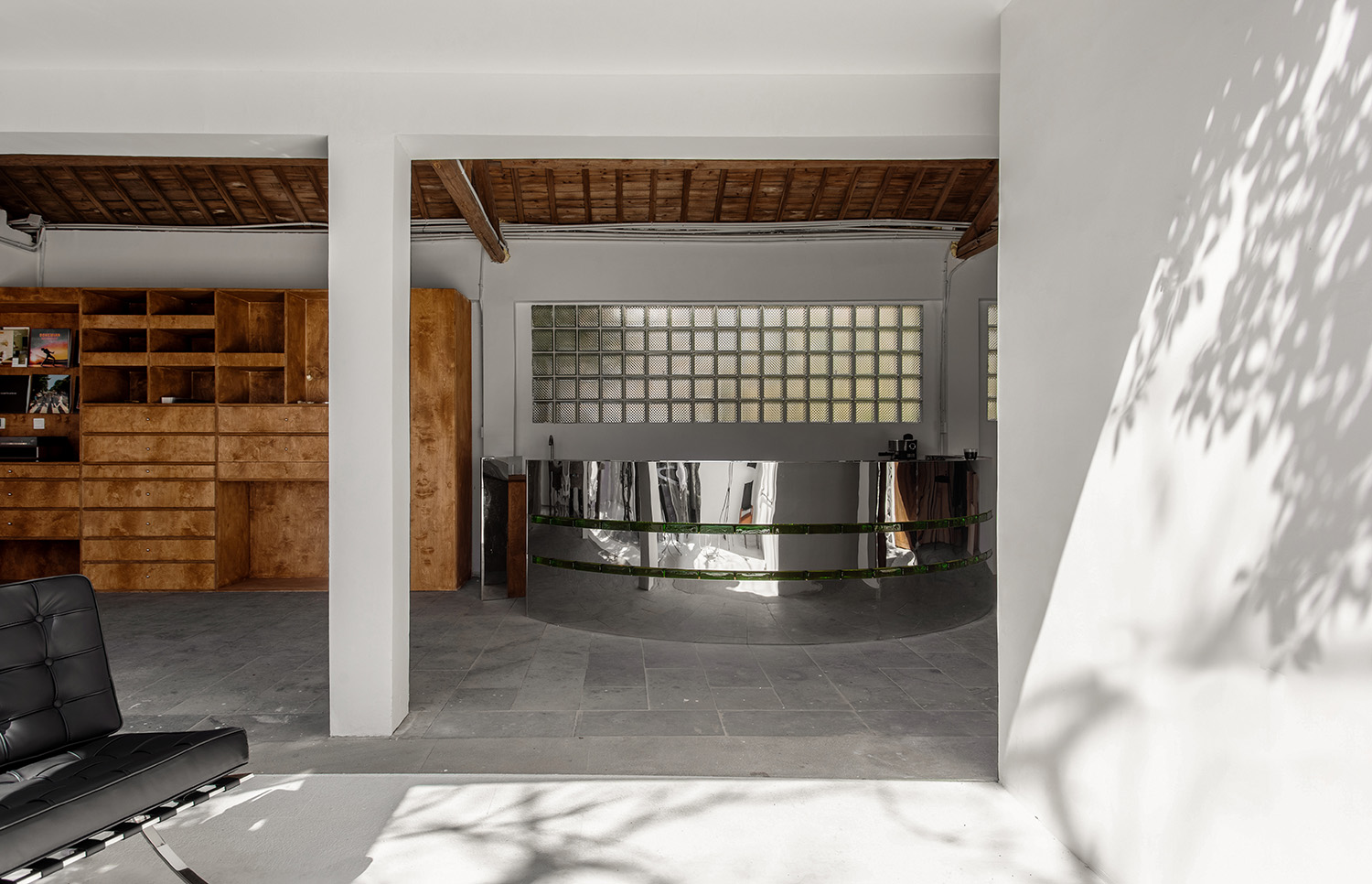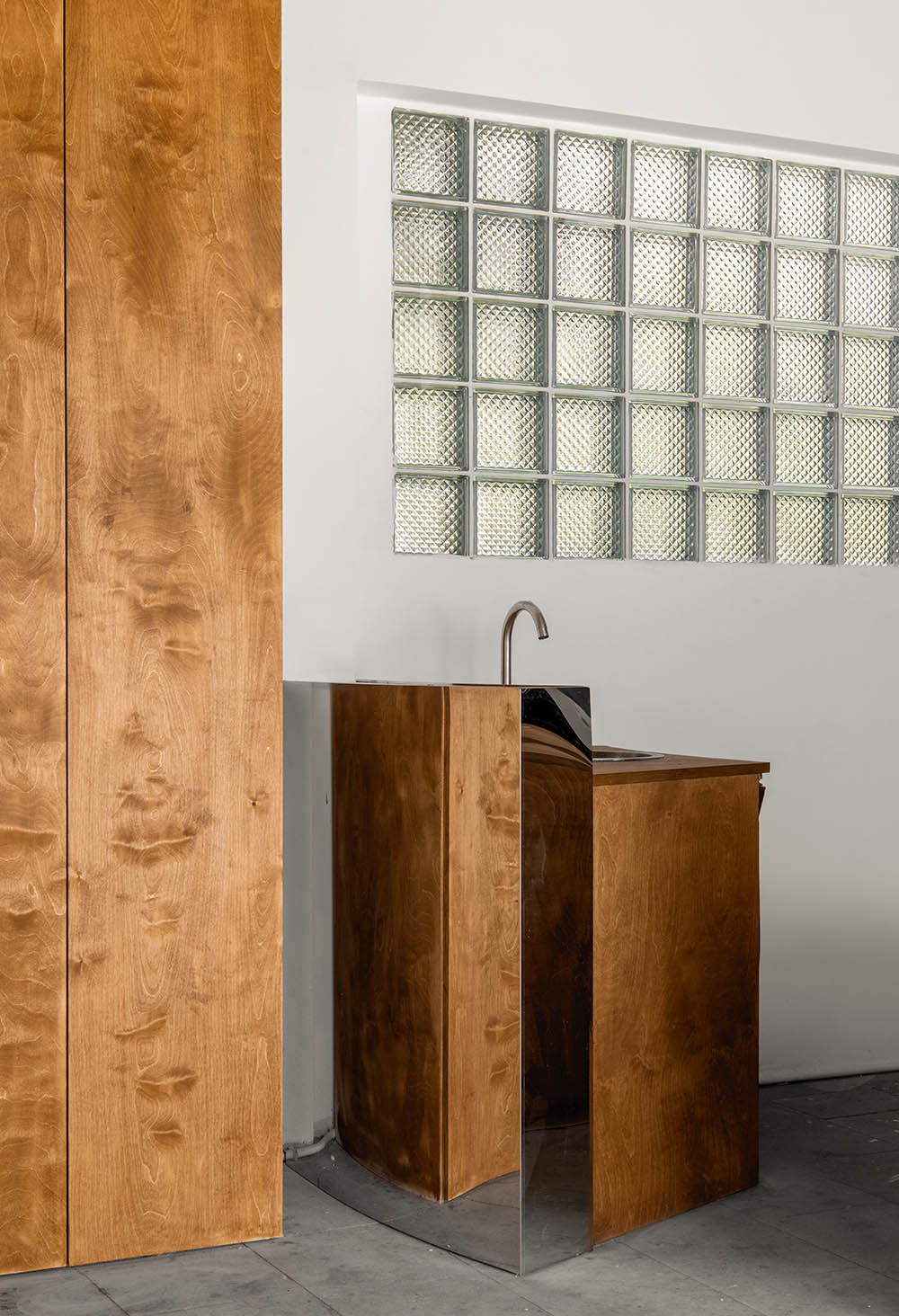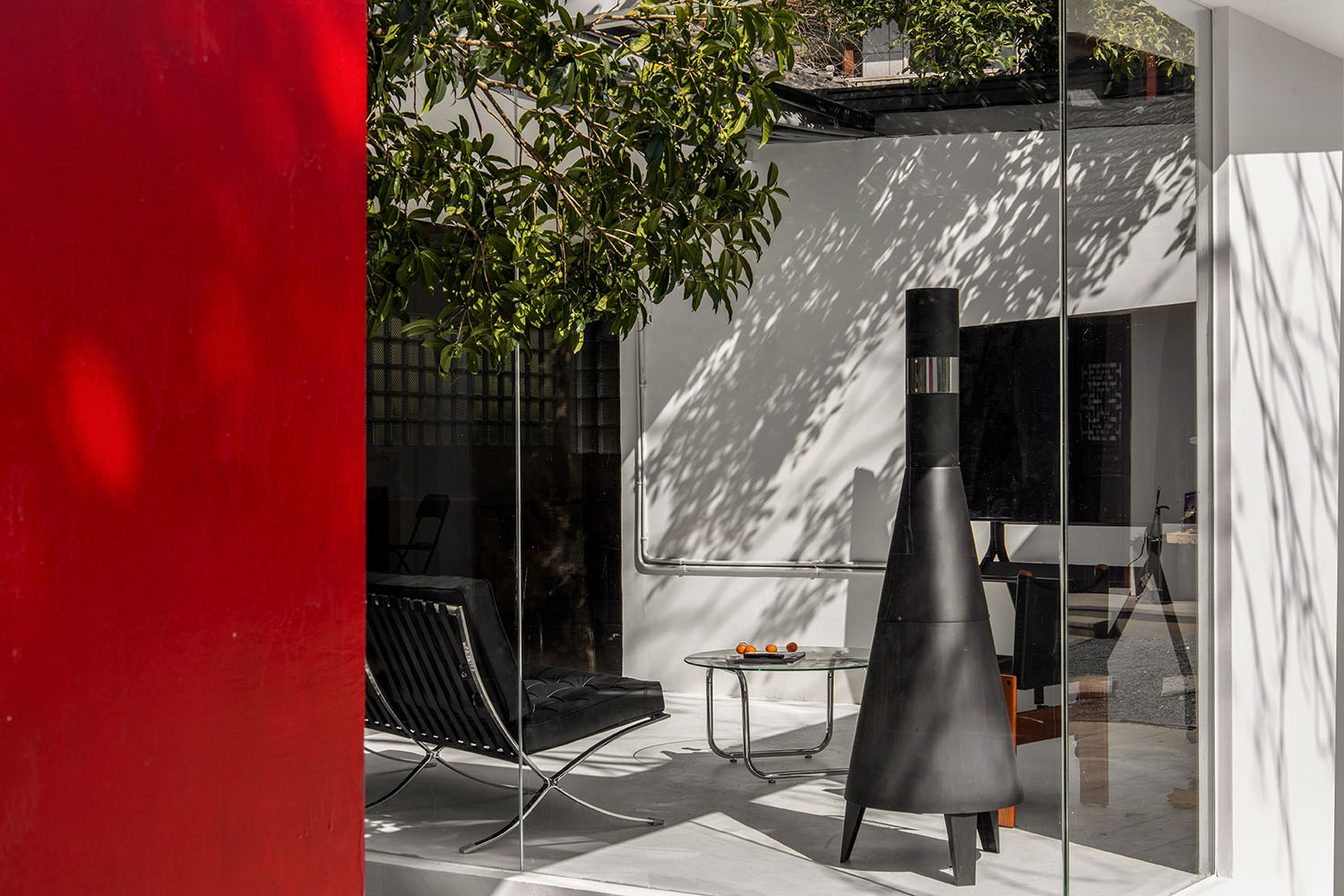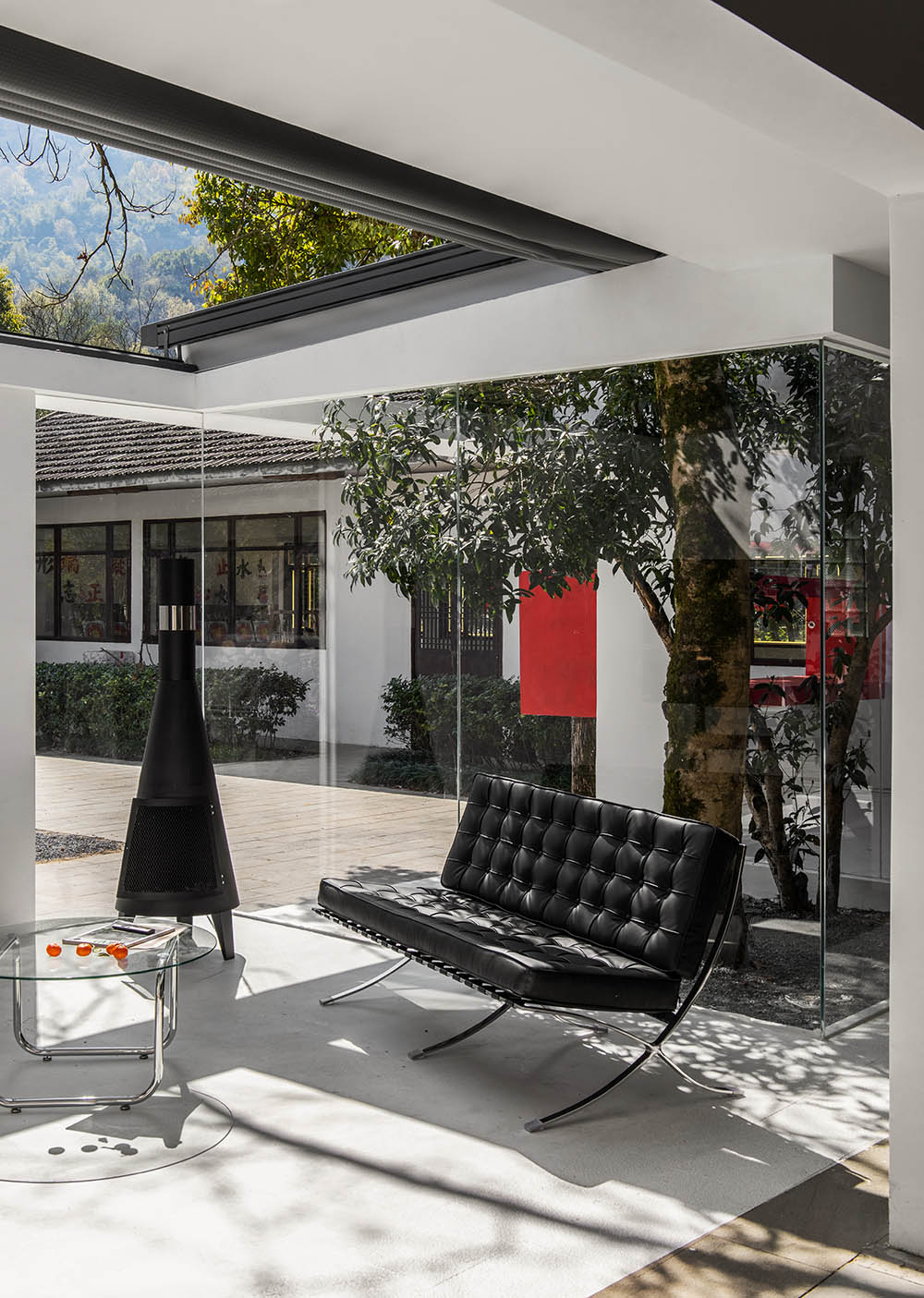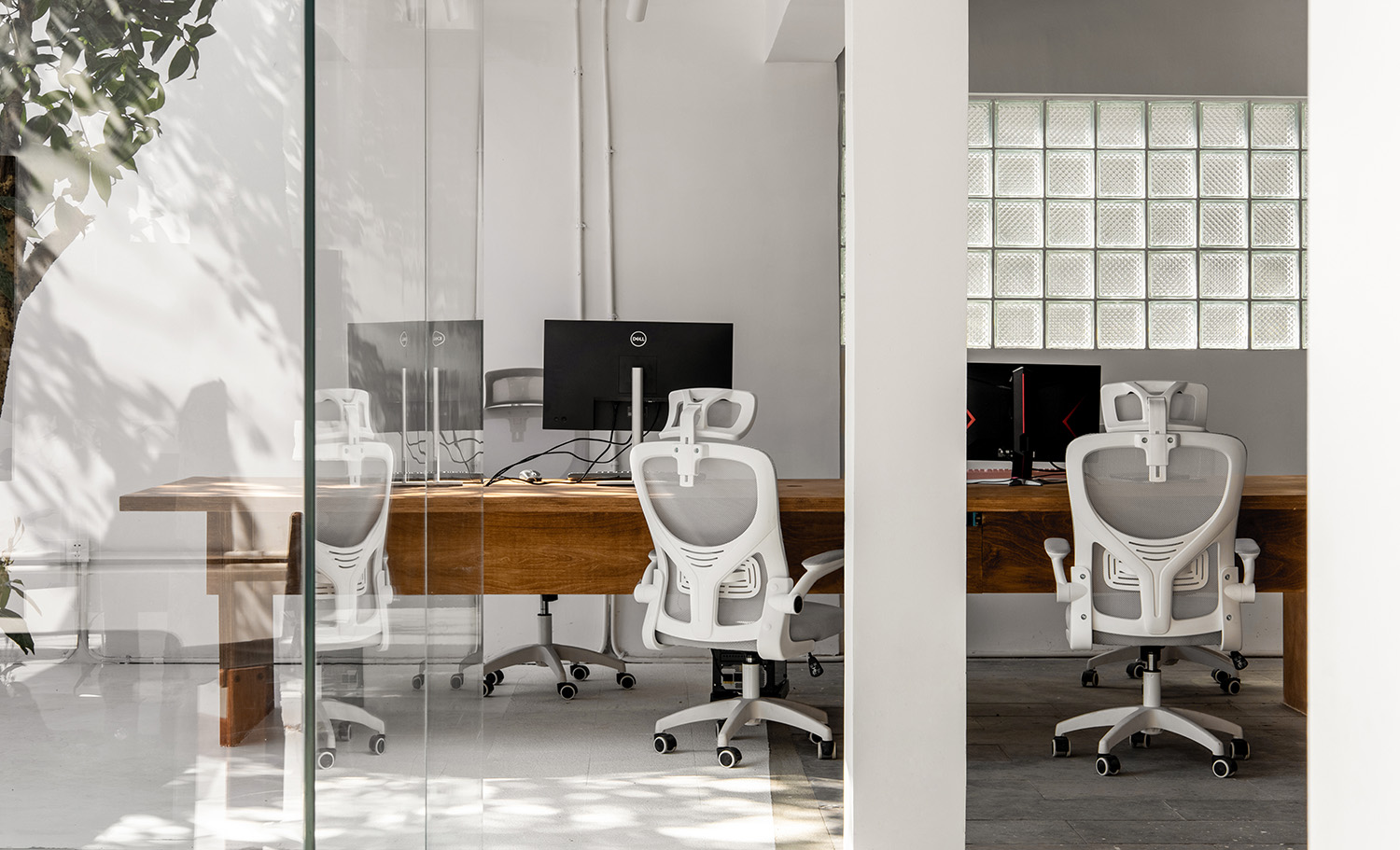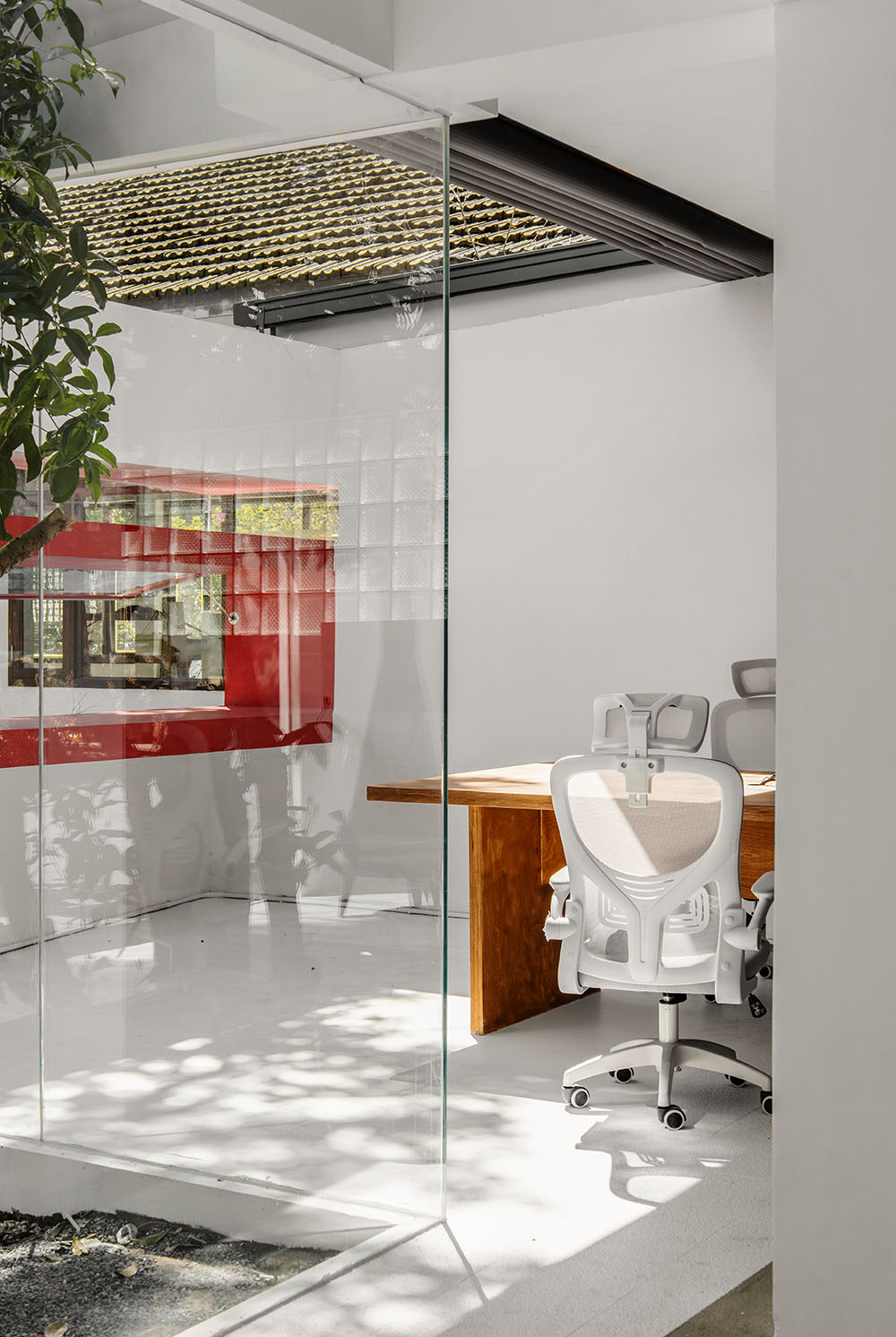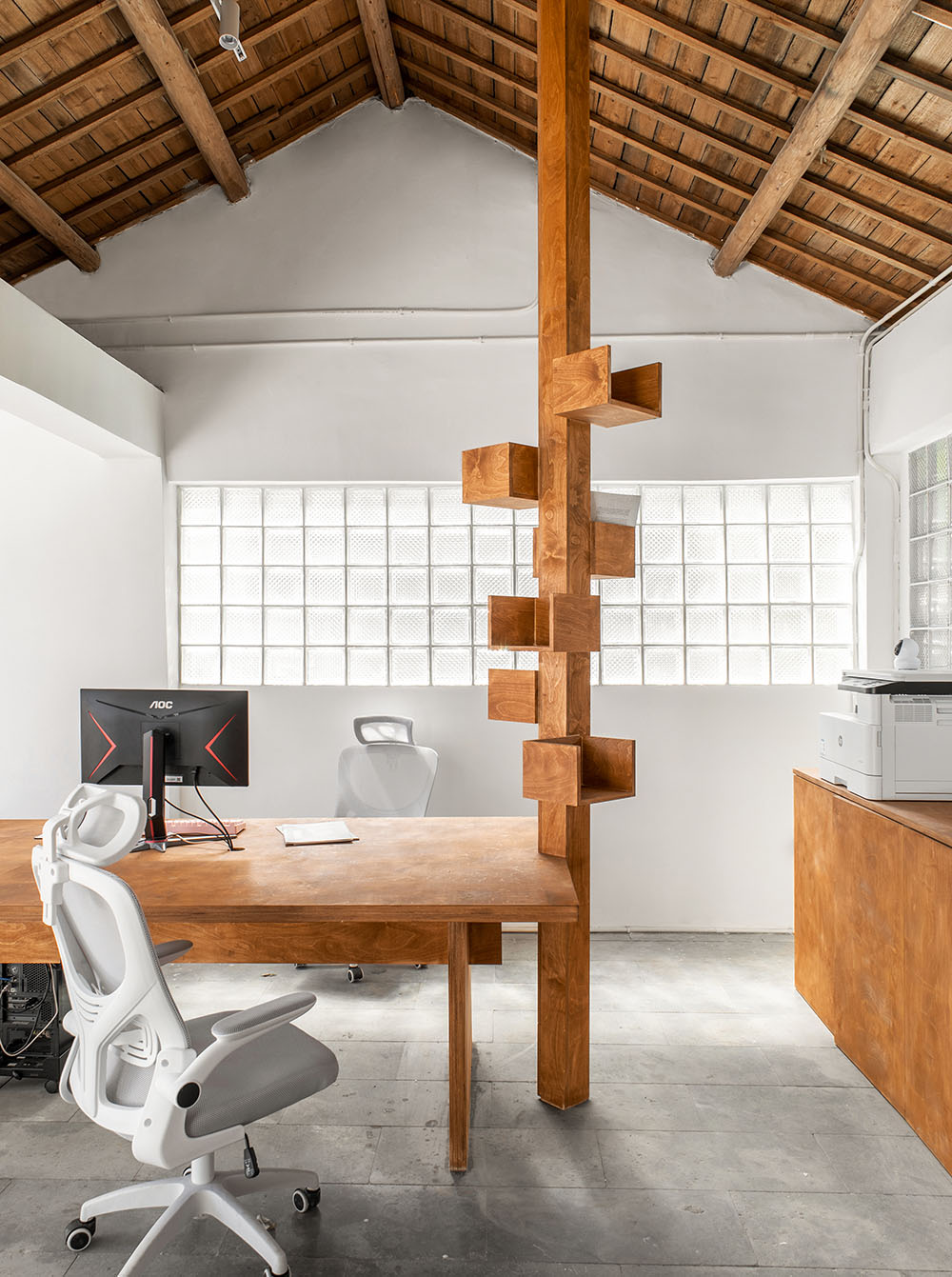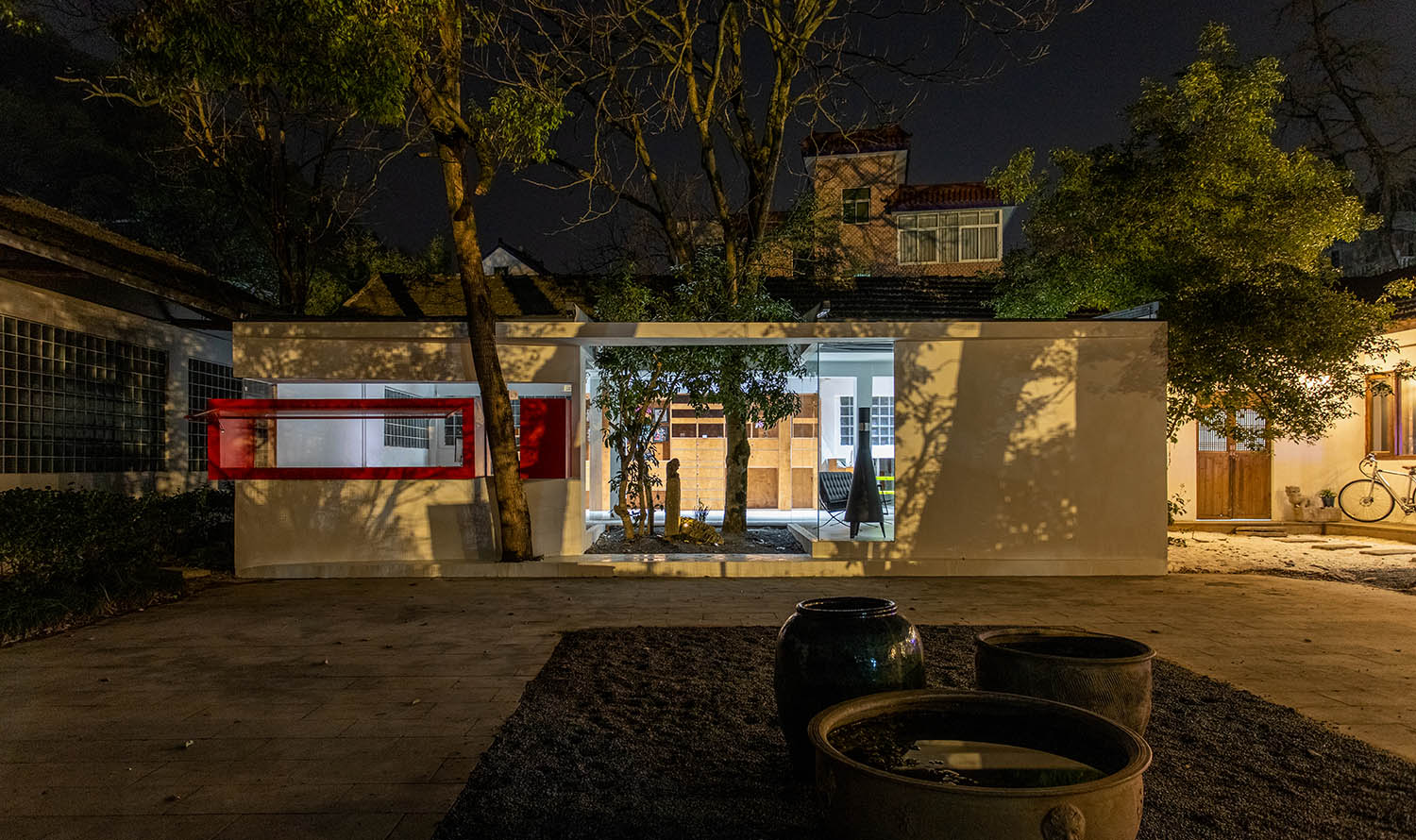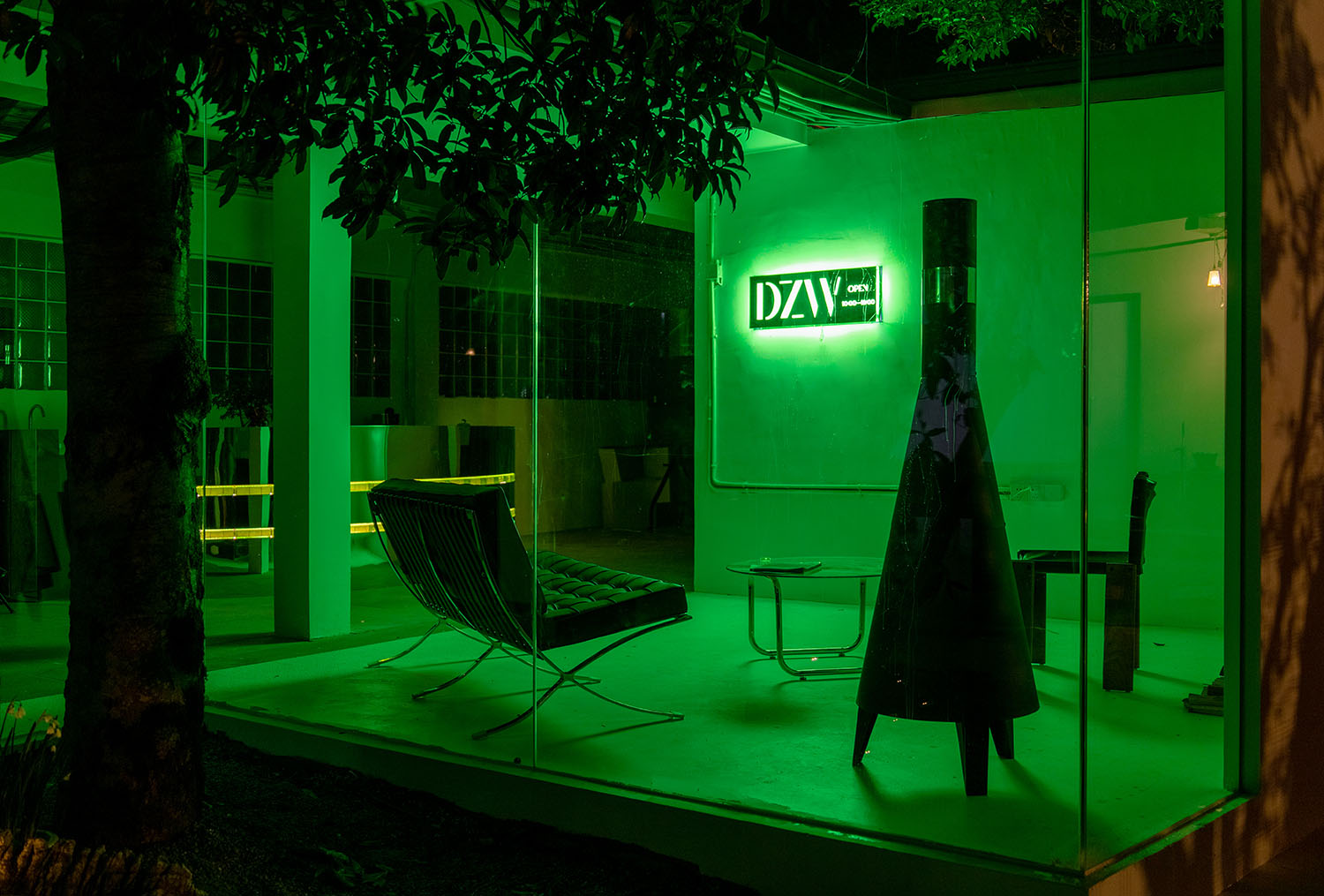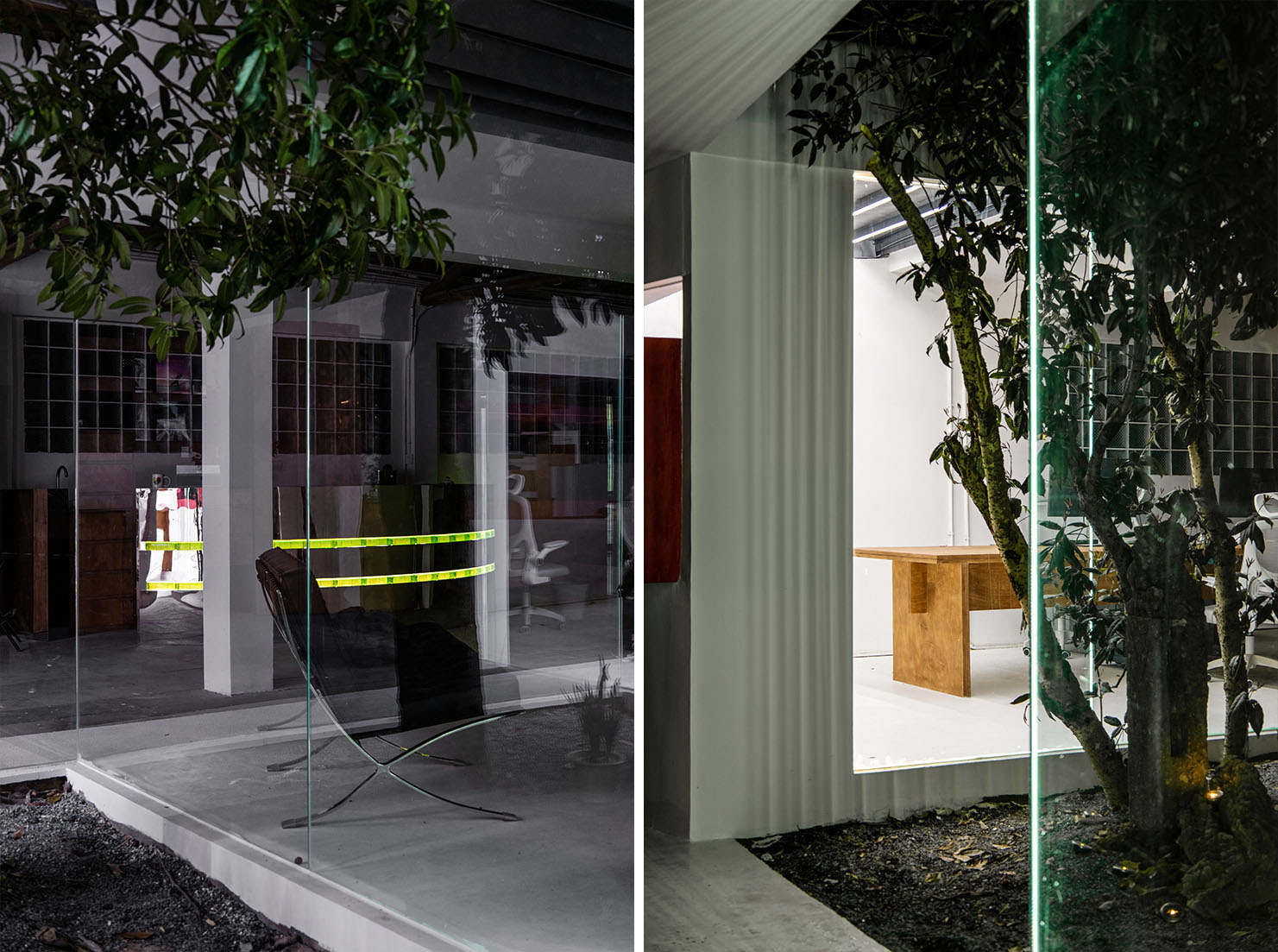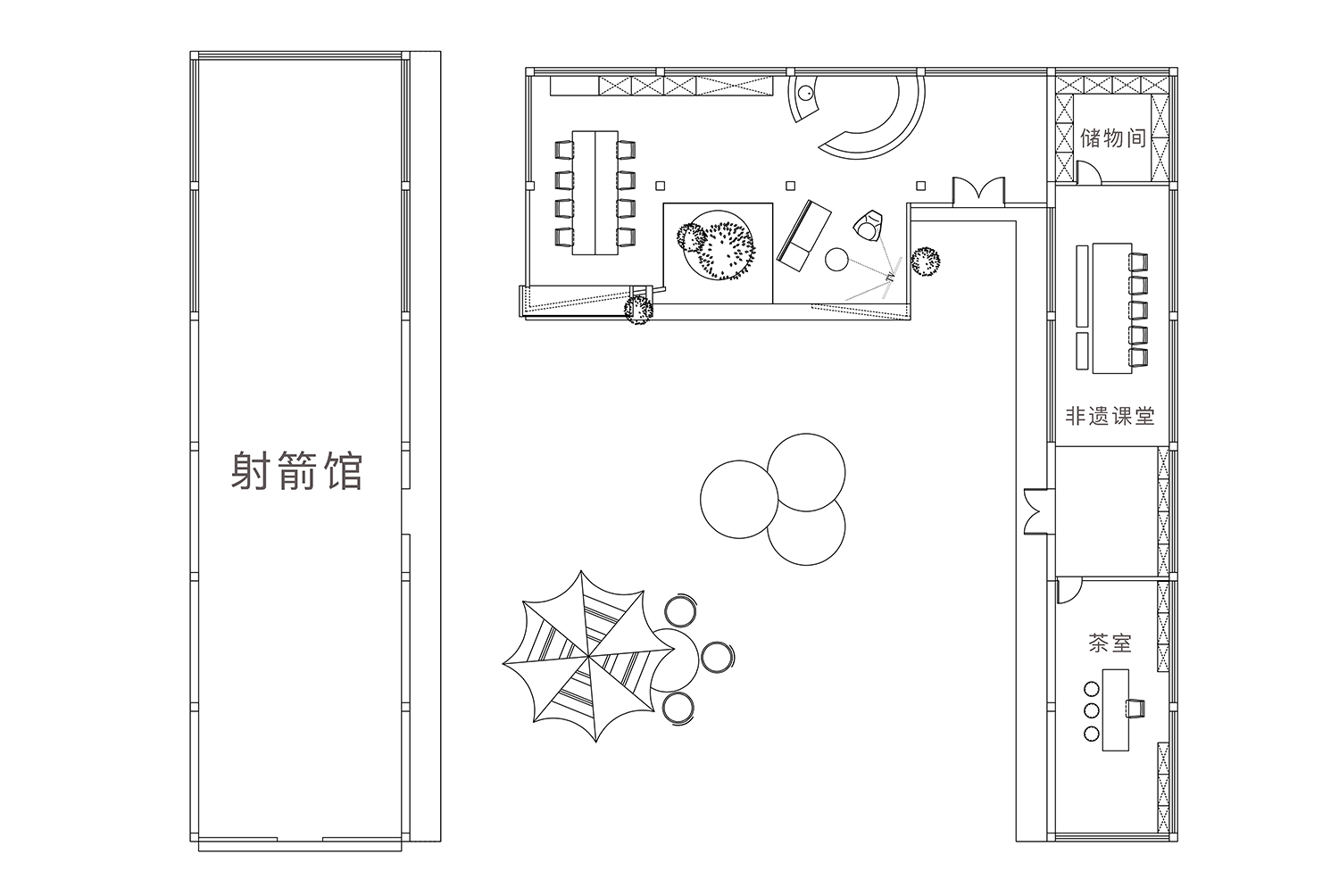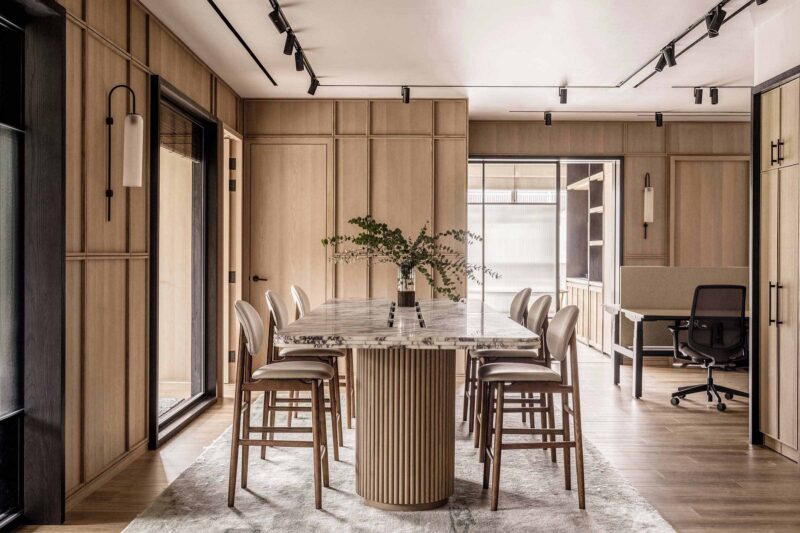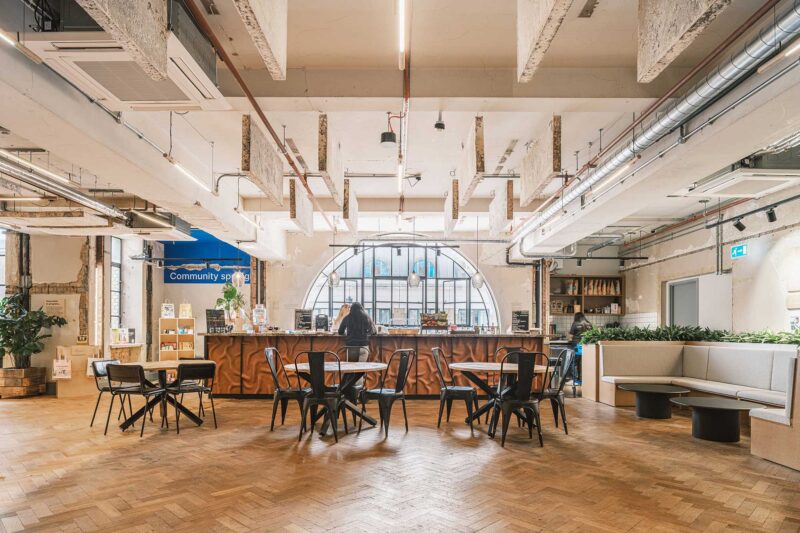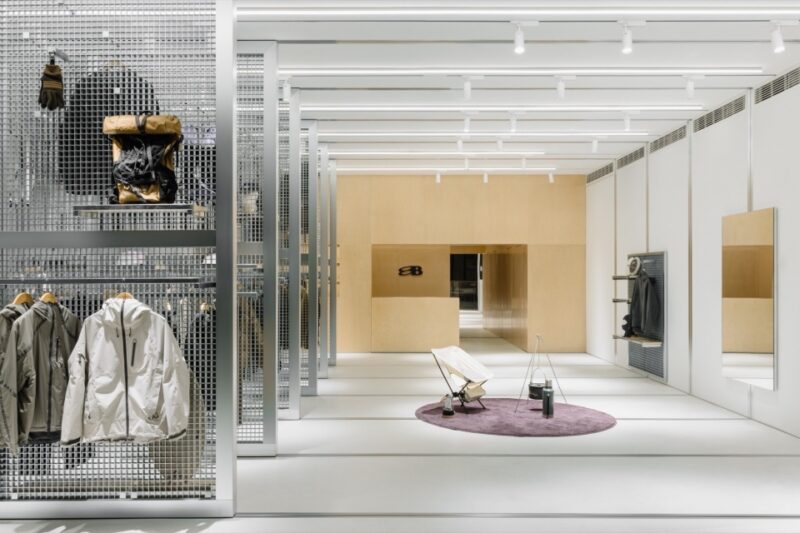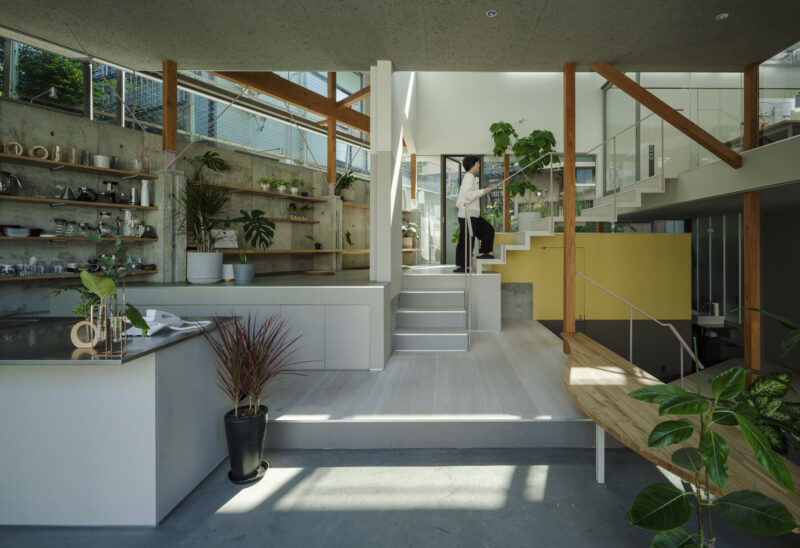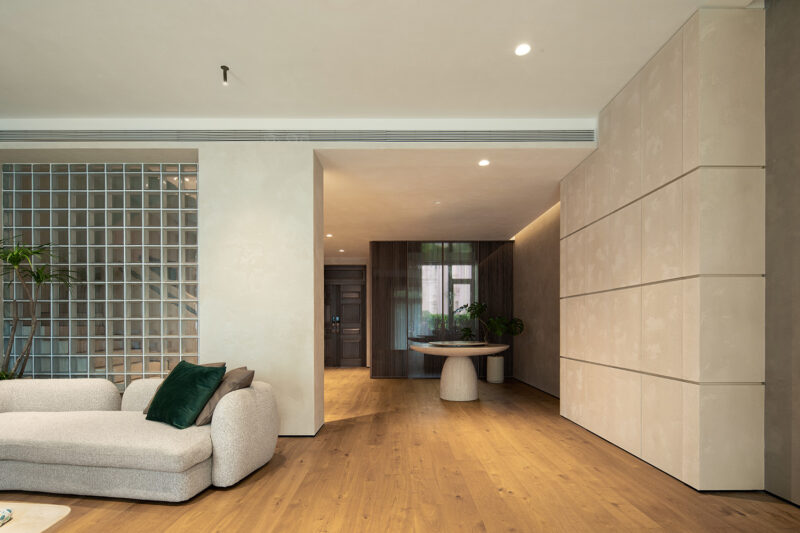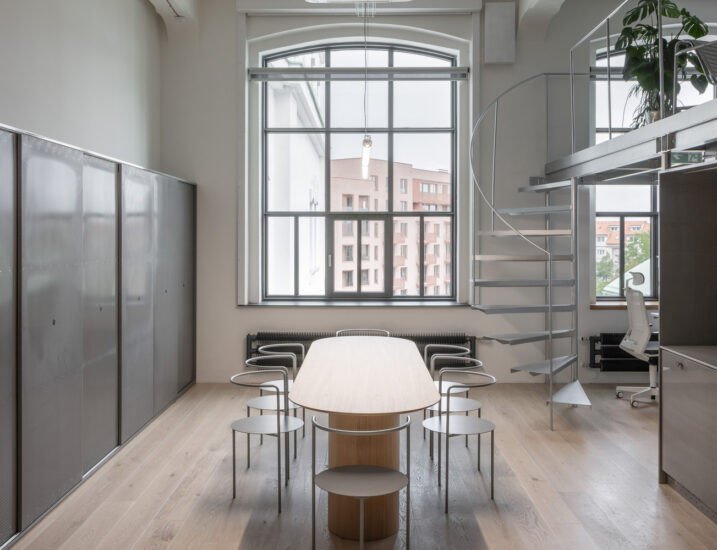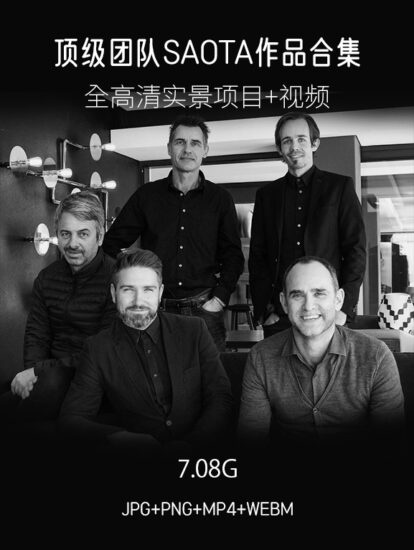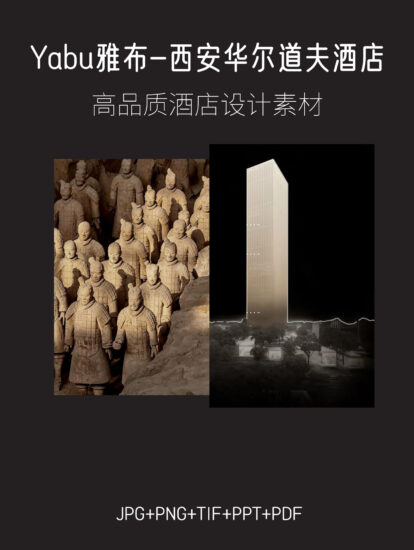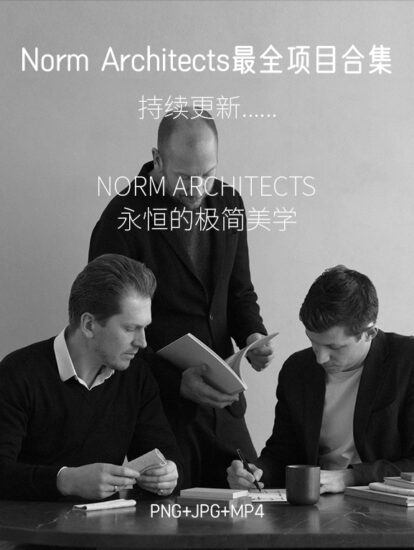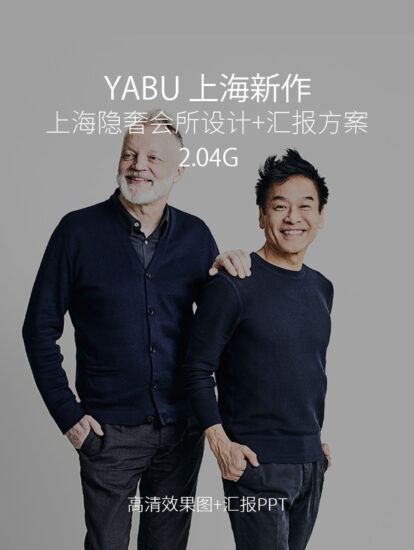小院坐落於杭州市靈山風景區內,在多年前作為小學使用,後經輾轉並入景區,成了對外開放的區域。
三個月前,這裏還是一副破敗的景象,年久失修,瓦片漏水,院子的花圃也顯得雜亂不堪。但院子的格局是我們尤為喜歡的,600㎡,一個合院、三座房子,雖沒有四合院的風雨連廊,但房子之間獨立的空間,反倒有了更為明確的空間劃分關係。
尤其是院子裏的幾棵大樹,如何在保留的前提下,與室內空間形成互動,也成了改造的一個“難點”。
In this issue, I would like to introduce to you our studio – Dazhuo Zhiwai Space Design. The small courtyard is located in the Lingshan Scenic Area of Hangzhou City. It was used as a primary school many years ago, and later merged into the scenic spot and became an area open to the outside world.
Three months ago, it was still a dilapidated scene, with years of disrepair, tiles leaking, and the flower beds in the yard were messy. But the layout of the courtyard is what we particularly like, 600㎡, one courtyard, three houses, although there is no wind and rain corridor of the courtyard, but the independent space between the houses has a clearer spatial division relationship.
Especially for the few big trees in the yard, how to interact with the interior space under the premise of preservation has also become a “difficult point” in the renovation.
外立麵
讓自然與設計融合
當初第一眼看到這個院子的時候,迎來了杭州的第一場初雪,瓦上積著來不及融化的白雪,地麵落滿了無患子金黃的落葉,不論是自然環境的襯托還是內心戲的加持,我們注定要成為小院的“改造者”。
When I saw this yard for the first time, it was the first snow in Hangzhou.The white snow that has not had time to melt is accumulated on the tiles, and the ground is covered with golden leaves of Sapindus chinensis,Whether it is the background of the natural environment or the blessing of inner drama,We are destined to be the “reformers” of small courtyards.
外立麵的改造我們秉持保留小院原始結構的初心,但作為設計工作室來說,又想要有一些跳脫於環境之外的產物。
將一部分原始地麵做硬化處理,在老房子的外圍依附新空間,幹脆利落的體塊穿插,構建出古樸與現代的視覺差。
In the renovation of the facade, we adhere to the original intention of preserving the original charm of the small courtyard, but as a design studio, we also want to have some products that escape the environment.
A part of the original ground is hardened, and a new space is attached to the periphery of the old house, and neat blocks are interspersed to create a visual difference between simplicity and modernity.
通過鋼化玻璃圍合出中庭區域,運用玻璃透明的特性,達成內外互通的視覺效果。
中庭保留了原先的桂花樹和無患子,預留足夠的生長空間,從形體上讓大樹穿透房屋,讓自然成為景觀,同時也成為設計的一部分。
The atrium area is enclosed by tempered glass, and the transparent characteristics of glass are used to achieve the visual effect of internal and external communication.
The atrium retains the original sweet-scented osmanthus tree and sapindus chinensis, leaving enough room for growth, allowing the big tree to penetrate the house physically, making nature a landscape and a part of the design at the same time.
在工作區一側設計超大上翻窗,用窗戶的體塊形成立麵的錯落關係,頂麵切角給香樟預留生長位置,讓香樟形成從地到頂的視覺穿插。
On the side of the work area, a super-large upward-turning window is designed, and the volume of the window is used to form the scattered relationship of the facade. The cut corners on the top surface reserve a place for the growth of the camphor, so that the camphor forms a visual interlude from the ground to the top.
上翻窗作為內外溝通的一個窗口,天氣好時也可作為對外臨時辦公的區域。
The flip-up window is used as a window for internal and external communication, and it can also be used as a temporary office area when the weather is good.
室內空間
內外共同
工作室的大門是特意從德清淘的清代老木門,選用障子紙作為門板密封材料,既保證了整體調性的統一,又做到了實用的功能。
The door of the studio is an old wooden door from the Qing Dynasty that was bought from Deqing. Shoji paper is used as the door panel sealing material, which not only ensures the unity of the overall tonality, but also achieves practical functions.
入戶吧台作為室內空間的轉折點,用鏡麵不鏽鋼營造出折射效果,讓視線更具延展性。而墨綠色玻璃磚的嵌入,剛好使得層次感更加鮮明。
As the turning point of the interior space, the entrance bar is made of mirrored stainless steel to create a refraction effect and make the line of sight more extensible. The embedding of dark green glass bricks just makes the layering more vivid.
桂花樹的枝條從頂麵伸進會客區,而側麵又能看到中庭的景觀,我們希望每位朋友坐在這樣的環境中,都能夠得到真正的放鬆。
The branches of the sweet-scented osmanthus tree extend into the reception area from the top, and the landscape of the atrium can be seen from the side. We hope that every friend can get real relaxation when sitting in such an environment.
我們希望辦公環境是輕鬆自然的,是一個讓人願意久待的空間。
現場定製超長的辦公桌,從室內延展到室外,抬頭是藍天,眼前是中庭綠植,通過景觀形成自然的內外交互設計。
We hope that the office environment is relaxed and natural, a space where people are willing to stay for a long time.
The extra-long desk was customized on site, extending from the indoor to the outdoor, with the blue sky looking up and the green plants in the atrium in front of you, forming a natural internal and external interaction design through the landscape.
穿插在辦公桌中的立柱看似是書架,其實當初是為了從頂麵走線到辦公桌而設計的,如今也成一個“意外”的裝飾品。
The columns interspersed in the desk seem to be bookshelves, but they were originally designed to run cables from the top to the desk, and now they have become an “accidental” decoration.
夜景
工作環境的極致反差
通過燈光的渲染,讓工作室呈現完全不一樣的狀態,很多朋友晚上來的感受就是:“你們這是要開酒吧嗎!?”
雖說這句話很搞笑,但這正是我們想要的工作環境反差感。
Through the lighting rendering, the studio presents a completely different state. Many friends come to the night and feel: “Are you going to open a bar!?”
It’s a funny line, but it’s exactly the kind of contrast we want in our work environment.
∇ 平麵布置圖
項目信息
項目名稱:大拙致外空間設計工作室
設計團隊:大拙致外空間設計
完成年份:2023年3月
項目地址:杭州市西湖區靈山村
建築麵積:600㎡
攝影師:大拙致外空間設計運營部
材料:鏡麵不鏽鋼、玻璃磚、樺木旋切膠合板、不鏽鋼


